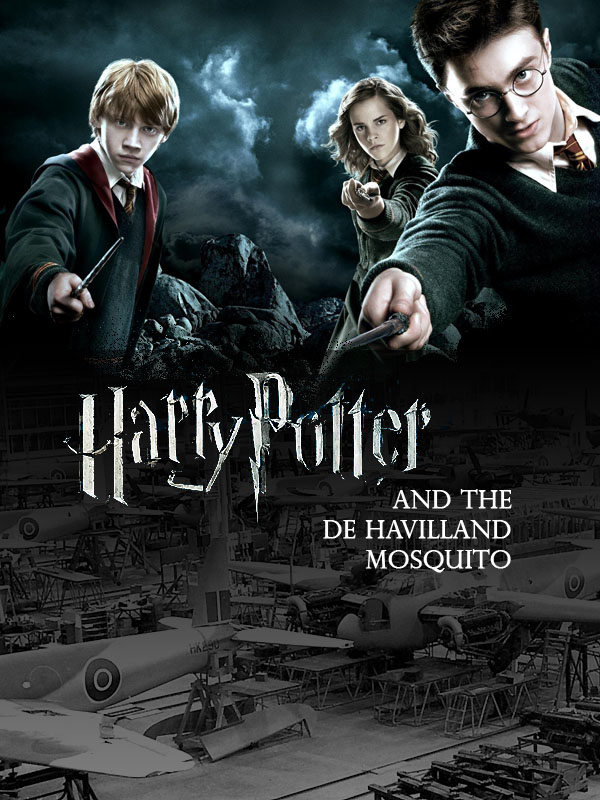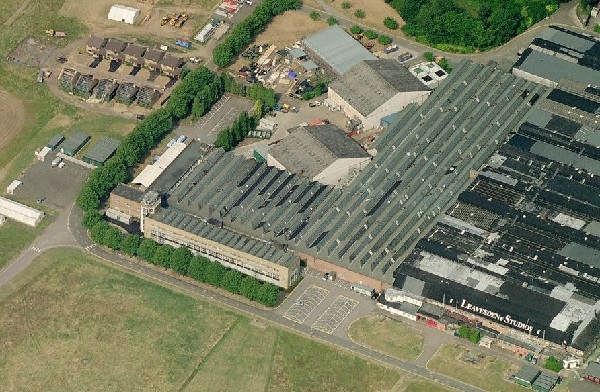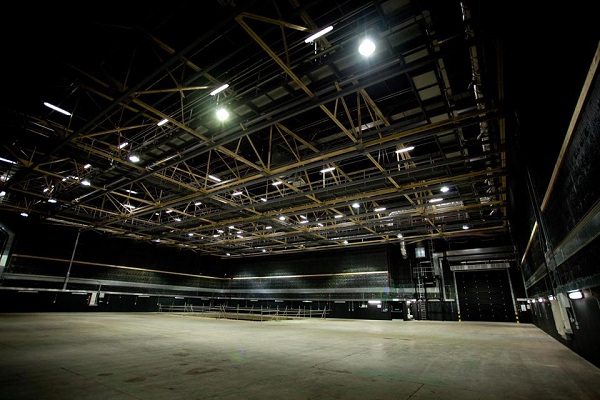

Less than 30 kilometres north of London sits the village of Leavesden, where the Ministry of Defence constructed an aerodrome in 1939. Leavesden wasn't unique in being selected as an
aerodrome; in the months leading up to the Second World War the number of airfields in Britain quadrupled from pre-war levels. What was unique is that it was to be the site of two new,
massive aircraft factories; one for Handley Page and their four-engine Halifax bomber, the other for de Havilland Aircraft and the Mosquito. By the war's end Mosquito production at
Leavesden totalled 1,476 - second only to the main factory at Hatfield.
While many wartime aerodromes were quickly bulldozed and returned to use as farmland, Leavesden survived with de Havilland maintaining a maintenance shop, and engine production facilities
on the property. The airfield also remained open for general aviation and for a while, limited scheduled passenger service. Over the years several fly-ins and small airshows were hosted
on the airfield, including appearances by the Good-Year blimp and the Concorde.
As I mentioned, de Havilland continued to use the Mosquito factory as a maintenance shop. In 1951, 10 B.35 Mosquitoes returned to the factory where they were converted for use as
photo-reconnaissance (PR) planes - beginning with the City of Calgary's RS700.
The Halifax factory was leased by de Havilland in 1946 and used by the company's aero engine division. In 1961 the de Havilland Engine Company merged with Bristol Siddeley engines, then
with Rolls-Royce Limited five years later. Rolls-Royce used the facility to manufacture turbine helicopter engines until 1993 when the decision was made to finally close the factory.
Seizing the opportunity to purchase such a large parcel of land so close to London, several investors made offers on the site. In every case, this meant closing the still operating general
aviation aerodrome. The first proposal included a golf course and hotel. Then Asian investors bought the property as the site of a Disneyworld-like theme park, but again, nothing came of
their plans.
In 1994 planning was underway for the next James Bond movie - Goldeneye. Unfortunately for the producers, Pinewood Studio, England's premier movie studio, was completely booked and
they were forced to look elsewhere for buildings big enough to accommodate their production. Finding Leavesden's massive factories intact, EON Productions scouted and rented almost
1,000,000 square feet of space and turned half of it into a soundstage.
In the years that have followed Leavesden Studios has been expanded and remodelled to accommodate the filming of some very successful movies, including Star Wars Episode 1,
Sherlock Holmes, The Dark Knight and all eight films in the Harry Potter series.
The aircraft have all gone but inside the Leavesden aircraft factories something's still being made - movie magic.

What a wonderful view of Leavesden in her heyday, cranking out "Wooden Wonders" for the war effort. Mosquito production here was second only to the main Mosquito production line in nearby Hatfield.

In this aerial photo its easy to see the studio's lineage as a wartime factory, despite the extensive modifications and renovations that have taken place since the property was purchased by Warner Bros. In the upper left corner of this image you can see the exterior set for Privet Drive from the Harry Potter series. (Warner Bros. Studios, Leavesden)

Looking inside at Studio 'J' its easy to see why an old airplane factory would make an ideal film studio. Other studios include a massive water tank. (Warner Bros. Studios, Leavesden)

Harry Potter fans will instantly recognize the house on Privet Drive that belonged to Harry's vengeful muggle aunt and uncle. The set for the whole street now sits on what was once part of the wartime airstrip. (Disney Dan, Flickr)
References:
Warner Bros. Studios, Leavesden
Leavesden Studios
TheStudioTour.com